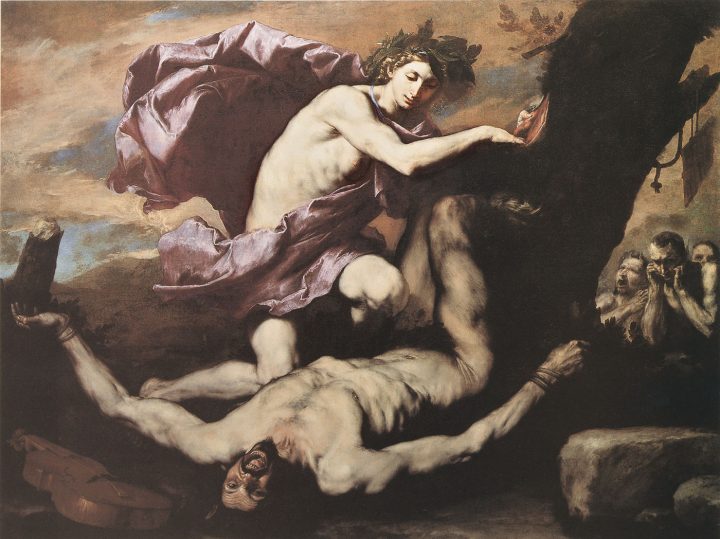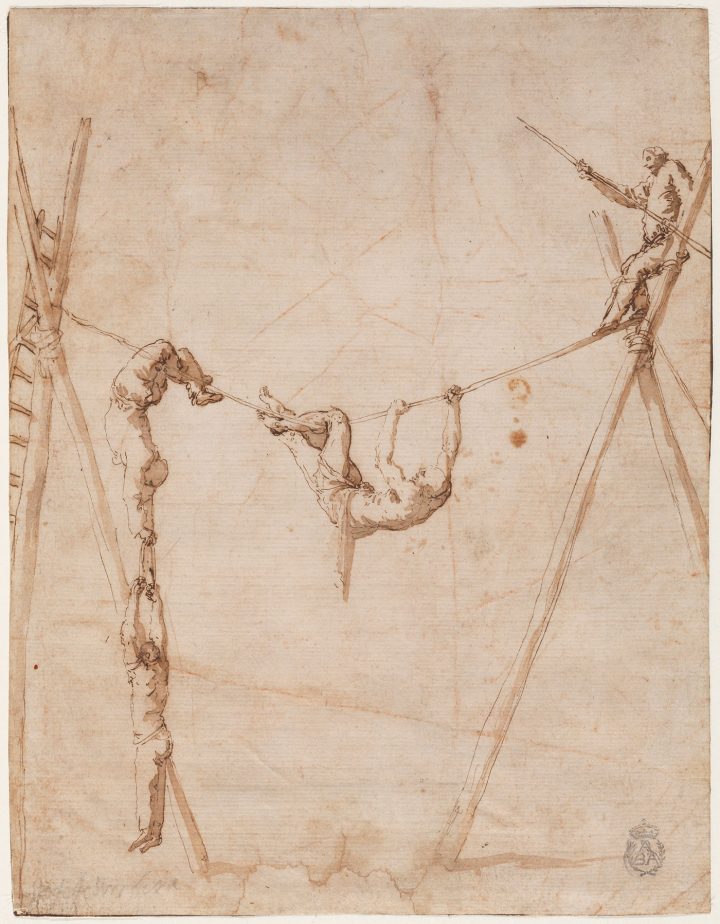Welcome to DU!
The truly grassroots left-of-center political community where regular people, not algorithms, drive the discussions and set the standards.
Join the community:
Create a free account
Support DU (and get rid of ads!):
Become a Star Member
Latest Breaking News
General Discussion
The DU Lounge
All Forums
Issue Forums
Culture Forums
Alliance Forums
Region Forums
Support Forums
Help & Search
Religion
Related: About this forumJusepe de Ribera's Catholic Perversity
An exhibition of drawings by the Counter-Reformation artist showcases his terrific bent towards horror.

Jusepe de Ribera, “Apollo and Marsyas” (1637), oil on canvas, Naples, Museo Nazionale di Capodimonte, Quintavalle (all images courtesy the Meadows Museum unless otherwise noted)
Rob Colvin
4 hours ago
“All property should be held in common (Omnia sunt communia) and should be distributed to each according to his needs, as the occasion required. Any prince, count, or lord who did not want to do this, after first being warned about it, should be beheaded or hanged.”
—Pastor Thomas Müntzer (1488–1525)
—Pastor Thomas Müntzer (1488–1525)
“
Baroque art was wrought under the strain of change during a warfare that was as wide as Europe and that conscripted art for propaganda more consciously and vehemently than any age has done until our own.”
—Curator Hyatt Mayor (1901–1980)
—Curator Hyatt Mayor (1901–1980)
DALLAS — In the 1630s drawing “Acrobats on a Loose Wire,” a frolicsome piece by Jusepe de Ribera (1591–1652), four performers freestyle on a loose tightrope. On the left, a figure latched on by his legs is holding a second man dangling from a looped rope. Ribera transposed these two men into another drawing from the same time, “Group of Figures with a hanged Man being taken down from a Tree.” Here, the pendulous performer becomes an executed man holding a crucifix while being lowered to the earth. The loop is now a noose, the man a martyr. In the second drawing, two other men climb on the tree for no apparent reason, despite the danger. To the right, men gaze into the distance as a mother clasps her naked baby and gestures to a passerby, who lifts his hat politely. The exchange probably goes something like: “Great day, ma’am.” “Indeed, but look at that hoopla down yonder. He’s dead.” It’s a baffling scenario, but an apt representation of Ribera’s terrific bent towards horror.

Jusepe de Ribera, “Acrobats on a Loose Wire” (late 1630s), pen and brown ink and brown wash onbeige paper, Museo de la Real Academia de Bellas Artes de San Fernando, Madrid

Jusepe de Ribera, “Group of Figures with a hanged Man being taken down from a Tree” (late 1630s), pen and brown ink and brown wash, Museo Civico
A leading Counter-Reformation artist who was born in Spain, Ribera worked his entire career in Italy after Protestantism was squashed there — around 1600, when the Baroque period of art began. The artist was a prolific draftsman and printer, which set him apart from his vanguard elder Caravaggio. Between Heaven and Hell: The Drawings of Jusepe de Ribera at the Meadows Museum is the most comprehensive exhibition to date of the Spaniard’s works on paper, with frequent glimpses into a wonderfully dark imagination. Most of Ribera’s drawings were not studies for larger paintings, but projects of their own ends. They served as inexpensive works that brought him side income and examples of his skill that he could distribute to those seeking commissions, such as Spanish viceroys who ruled the city where he lived, Naples. His subjects, all of which are represented in this show, vary more than any other artist of his time, ranging from saints, martyrs, gods, and heroes to corporeal punishment, urban and rural scenes, and bizarre fantasies. They always contain figures, mostly men.
https://hyperallergic.com/375905/jusepe-de-riberas-catholic-perversity/
InfoView thread info, including edit history
TrashPut this thread in your Trash Can (My DU » Trash Can)
BookmarkAdd this thread to your Bookmarks (My DU » Bookmarks)
0 replies, 3959 views
ShareGet links to this post and/or share on social media
AlertAlert this post for a rule violation
PowersThere are no powers you can use on this post
EditCannot edit other people's posts
ReplyReply to this post
EditCannot edit other people's posts
Rec (0)
ReplyReply to this post